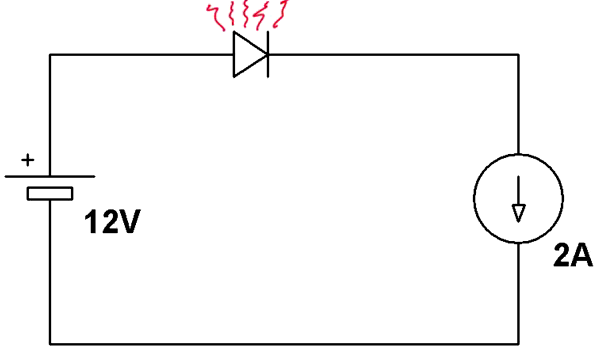Protection of devices against incorrect polarity supply

When designing industrial devices that are subject to increased requirements for reliability, I have repeatedly encountered the problem of protecting the device from incorrect polarity of the power supply. Even experienced installers sometimes manage to confuse plus with minus. Probably even more acutely similar problems occur during the experiments of novice electronics engineers. In this article we will consider the simplest solutions to the problem - both traditional and rarely used in practice methods of protection.
The simplest solution that comes with the move is to turn on a regular semiconductor diode in series with a device.

Just cheap and angry, it would seem, what else is needed for happiness? However, this method has a very serious drawback - a large voltage drop on an open diode.

Here is a typical IVC for direct diode switching. At a current of 2 Amps, the voltage drop will be approximately 0.85 volts. In the case of low voltage circuits of
0.85V x 2A = 1.7W.
The power dissipated on the diode is already too much for such a body and it will noticeably warm up!
However, if you are ready to part with a little more money, then you can use a Schottky diode, which has a lower voltage drop.

Here is a typical CVC for a Schottky diode. We calculate the power dissipation for this case.
0.55V x 2A = 1.1W
Already somewhat better. But what to do if your device consumes even more serious current?
Sometimes parallel to the device put the diodes in reverse switching, which should burn if you mix up the supply voltage and lead to a short circuit. In this case, your device will most likely suffer minimal damage, but the power supply may fail, not to mention that the protective diode itself will have to be replaced, and with it the tracks on the board may be damaged. In a word this way is for extreme sports.
However, there is another somewhat more costly, but very simple and devoid of the above disadvantages method of protection - using a field-effect transistor. Over the past 10 years, the parameters of these semiconductor devices have improved dramatically, and the price on the contrary has dropped dramatically. Perhaps the fact that they are extremely rarely used to protect the responsible circuits from the wrong polarity of the power supply can be explained in many respects by the inertia of thinking. Consider the following scheme:

When power is applied, the voltage to the load passes through a protective diode. The fall on it is quite large - in our case, about a volt. However, as a result, a voltage exceeding the cutoff voltage is formed between the gate and the source of the transistor and the transistor opens. The source-drain resistance decreases sharply and the current begins to flow not through the diode, but through the open transistor.

Let us turn to the specifics. For example, for transistor FQP4706 typical channel resistance will be 0.026 Ohm! It is easy to calculate that the power dissipated at the same time on the transistor for our case will be only 25 milliwatts, and the voltage drop is close to zero!
When changing the polarity of the power source, the current in the circuit will not flow. Among the drawbacks of the circuit, one can perhaps note perhaps that such transistors have not too much breakdown voltage between the gate and the source, but slightly complicating the circuit, it can be used to protect more high-voltage circuits.

I think readers will not be difficult to figure out how this scheme works.
After the publication of the article, the respected user Keroro in the comments led a protection circuit based on a field-effect transistor, which is used in the iPhone 4. I hope he will not mind if I supplement my post with his find.

')
Source: https://habr.com/ru/post/254035/
All Articles